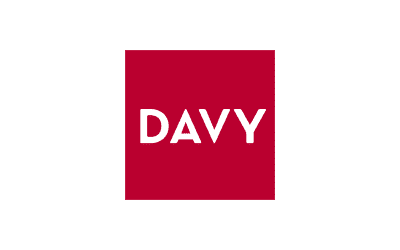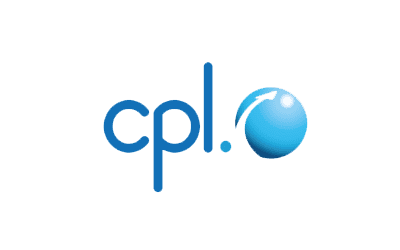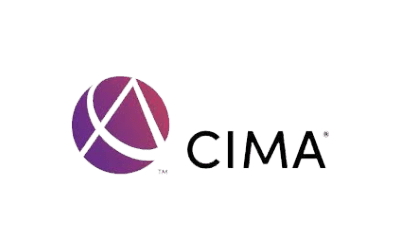Wednesday 25th October, 2023
The problem with webinars
Webinars are the new seminars. Ashish Mohan and Alfred Hauenstein on how to make them more effective.
We’ve all done it. We have all fallen asleep during a webinar. As far as sleeping aids go, there is probably none as effective as the modern, one-hour webinar. At their worst, these meetings are highly ineffective and boring, and—alarmingly—are now everywhere. It would not be an exaggeration to say that in any given month, the collective investment in time by webinar participants worldwide is probably in the millions of person-hours. For an activity that takes up so many people’s time and energy, there is surprisingly little thought given to its efficacy. Most webinars end without asking participants for feedback; there is no effort made to analyse their effectiveness; and organisers continue to dole them out in essentially the same way ad infinitum.
Typically, webinars take the form of a slide presentation, where an expert delivers a lecture. The lecture consists of the expert basically reading all the information on the slides, perhaps interspersing their talk with examples and sporadic attempts at humour. Most of the time, audience participation is negligible or zero. The video and audio of participants is often muted. It’s almost as if the audience doesn’t exist. If we are lucky, we are promised a chance to ask questions at the end of the presentation, but often many of us are unable to ask questions due to the paucity of time.
So what’s wrong with doing webinars this way, you ask? The problem lies in the one-way communication of the lecture method: it does manage to convey a lot of information in a short amount of time, but it also suffers from several fatal disadvantages. Some of these are described below:
- Disengagement. Research shows that the lack of audience engagement inherent in the lecture method can cause many of us to tune out as quickly as 15 minutes into the speech.
- Meagre retention. According to research, most participants listening to a lecture will recall just 2 to 3 percent of the original information 30 days later.
- Not suited for higher orders of thinking. Being a passive method of imparting knowledge, the lecture method is not suited for exercising higher orders of thinking such as reasoning, analytical thinking, decision-making or problem-solving. It also does little to stimulate creative thinking, or influence values or attitudes.
- Lack of value addition. Steve Jobs said that anyone who uses PowerPoint slides does not know what they are talking about. While you may not share Jobs’ brutal aversion to slides, he did have a point. Consider the slide presentation you are putting together for your next webinar. Since you are just going to be reading the information off the slides, you are not necessary. That slide presentation can just as well be e-mailed to participants without a significant loss in understanding
So knowing how ineffective the standard webinar can be, how can we improve its effectiveness? The following points might help:
- Clearly define the purpose, scope and objectives of the webinar
When you begin planning your webinar, ensure the session has an overarching purpose. For example, the purpose of your webinar might be ‘to enhance the selling skills of our salespeople’. Next, clearly define the scope of the session. For example, will your webinar cover selling skills for the high-net-worth market segment, or all market segments? In addition, try to state clear objectives for the session. Think of objectives as the purpose broken down into concrete steps, actions or skill sets. For example, your webinar on selling skills might have objectives such as ‘developing lead generation skills; developing skills related to face-to-face interaction with prospects; and understanding the various selling methods’.
- Choose an appropriate title
One of your authors found the title of a recent webinar, ‘How Recruits View our HR Policies’, vague and confusing. It left him thinking: What is the session going to be about? How will it be of relevance to me? He really didn’t have a clue, but when he saw that the panelists were all members of the HR department, he realised the session had something to do with people issues.
‘How recruits view our HR policies’ is concerned with observations, not action. It’s a passive title, not an active one. We like session titles that are active. For example, we prefer titles such as ‘Effective recruitment strategies for our sales department’, ‘Enhancing employee engagement in our Milwaukee office’, ‘Reducing attrition among our new hires’, ‘Crafting effective career development plans for our factory supervisors’, or ‘Attracting, engaging and retaining talent in the Southern region’. Each of these titles, while stating the purpose of the session, also clearly defines its scope.
- Create a structure that encourages participation
Remember that the lecture method comes with a plethora of disadvantages. Therefore, avoid structuring your webinar as a lengthy slide presentation. If you really want to share a set of slides, convert them into a .pdf file and e-mail it to participants a few days before the webinar. Your slides can serve as pre-reading that helps participants get ready for a more informed discussion during the webinar. We urge you to use the flipped classroom instructional strategy: share knowledge before the program; use webinar time for activities that involve higher order thinking.
A gamut of workshop tools are available to make your webinars more participative and useful. These include case studies, discussion, debates, role plays, quizzes, experiential exercises and self-assessment inventories. If you don’t have much experience with these (for example, if you don’t know how to write or use a case study), perhaps ask a management development professional or business academic for help.
When choosing activities for your webinar, keep the purpose of the session uppermost in mind. For example, if you are wrestling with a complex organisational problem and want to discuss that in your webinar, why not use a case study to start things off? Send participants a case study as pre-reading. Start your webinar with a discussion of the case study, then dive into a problem-solving session during which participants share challenges and everyone suggests solutions. Such a structure creates room for discussion, experience-sharing, brainstorming and problem-solving; such a structure builds in audience engagement and connection; such a structure incites inspiration, new learning and growth.
When choosing activities, it’s important to consider the knowledge and experience level of your audience. For example, an audience comprising of heads of companies will have very different needs as compared to an audience consisting of new hires. When dealing with an audience that may have inherent communication barriers (for example, multi-cultural teams or teams drawn from disparate functional areas), it can be helpful to start with an ice-breaker (such as a fun quiz) before delving into more serious discussion.
So should you eschew slides altogether? Not necessarily. You can always use a slide or visual to emphasise a point. But avoid using slides that are overloaded with massive amounts of text.
- Limit time spent on introductions
One of your authors recently attended a webinar which started with person A introducing person B, who then introduced the moderator, who then proceeded to introduce all the panelists by reading out their brief profiles (this chain of handovers was repeated in reverse order during the conclusion of the session). The webinar duration was one hour. Precious time was lost during this process. This time could have been better spent in delivering useful content and inviting audience participation.
In this case, wouldn’t it have been better to start directly with the moderator? And do we really need to spend time introducing so many panellists in a session of such limited time? In our opinion, it might have been better to attach a .pdf file containing brief bios of the panellists in the webinar invitation itself.
- Ask for feedback
To improve future webinars, it is vital to ask your audience for feedback. Design a simple feedback form: ask participants to list what they liked about the program; ask them to list what they did not like; and ask them to share suggestions for improving the program. Request participants to e-mail their feedback forms within a day or two. Review the feedback carefully and make a one-page summary of it. Share the feedback summary with relevant people in your organisation.
As you can see, there are many ways to liven up a webinar and make it more impactful. It takes a bit of work to create an effective webinar, but we guarantee you won’t have anyone falling asleep.
About the authors:
Ashish Mohan ([email protected]) is a behavioral scientist and business author. He has been working as an organisational development consultant and management educator for over 20 years, and has done extensive work in the areas of leadership and innovation for Indian and European companies.
Alfred Hauenstein ([email protected]) is Corporate Vice President PLM and Innovation Excellence at Siemens AG. He is also a start-up coach and an honorary professor for electrical engineering at Tongji University Shanghai, China.















